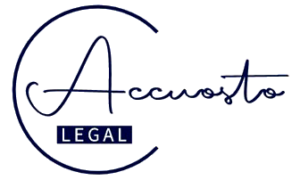THE EXAMPLE OF THE TECHNOLOGY PLATAFORMS AT THE BARCELONA SCIENCE PARK
In order to accomplish its goals, The Barcelona Science Park has defined a Business model which combines a High-value service portfolio, a wide Ranging Research expertise and an infrastructure attractive for Large and small companies, mostly in the life sciences.

As a technology provider, the Barcelona Science Park has to balance several priorities and activities. First and foremost is to provide our customers with the best of services, based on state-of-the-art equipment and a team of one hundred scientists and technicians. We also need to ensure that our technology offer is up to date, adding new services according to the developments in each one of our fields of expertise. Underlying everything is the need to make all this structure financially sustainable while remaining competitive in a market awash with technology facilities and contract re-search organizations.
The specify of Barcelona Science Park
The Barcelona Science Park was created in 1997 by the University of Barcelona, and opened its first laboratory building in 2001. It hosts three public research institutes as well as over seventy companies in the university area of Barcelona, close to the city center. The third component of the Barcelona Science Park, besides the public and private sector tenants, is a wide range of technology support facilities, which includes our technology platforms. The Park’s technology platforms are its most characteristic feature, very different from the usual core facilities that can be found in most research institutions.
What makes these platforms special is that they fulfill a double role: they provide high-value added services and they are also research groups. At the interface between service and research, the technology platforms provide technology co-development, forming partnerships with collaborators from the public and private sectors. They are run like small contract research organizations and are very much customer oriented.
The management of Intellectual Property
Within this scenario where contract re-search is provided alongside research projects and technology co-development, it is important to have a clear strategy for the management of intellectual property. Each situation is dealt with on its own merits, but nevertheless there are some general guidelines which apply to most of our activities.
In the case of contract research, fee for service technology support, any intellectual property issuing from these projects belongs solely to the customer contracting our services. Exceptions to this would be if, during the development of the projects, our scientists provided some crucial input. This is not to be expected, since our contract research is standard and any inventive step leading to a patentable invention has most likely already taken place in the laboratories of the customers.
For instance, a protein for which our automated crystallography platform determines the three dimensional structure might be patentable, but the determination of the structure in itself would not lead to a patent. The same can be said of our proteomics, transcriptomics or toxicology platforms, to name a few high-throughput services that we provide. On the other side, research collaborations are liable to give rise to patentable inventions. In this case, we foresee before the start of the project what the expected relative contributions of each partner are. It is understood that without all the partners the invention would not have been developed, although the particular technical know-how is provided by one specific partner.
This is why the allocation of inventor credits recognizes the specific contributions of individuals working for all of the partners, and the ownership of the patent is attocated according to a previously agreed percent.
One example of this situation is a patent currently being pursued, involving one company, one research institute, the Park’s own proteomics platform and a few other institutions based outside the Barcelona Science Park, including the University of Barcelona. The relative contributions of inventors from each institution are recognized, as well as the exploitation strategy and other aspects related to technology transfer. Another example is a patent for a new kind of cell penetrating peptides. This involves a public research institute, one company, the University of Barcelona and the Park’s own combinatorial chemistry platform. Again, the relative contributions and the exploitation strategy are set from the beginning.
In both cases there are scientific articles ready to be published as soon as it is possible to do so without compromising the viability of the patent with an early disclosure.
Because the technology platforms also offer co-development as a service, it is necessary to sort out any foreseeable patentable outcomes from the beginning. Usually the aim of the platform is to add a new technology to their portfolio of services, and depending on the definition of the project the intellectual property may be allocated completely to the partner. Still, in many occasions the input of the scientists from the platform merits their inclusion as co-inventors.
The Barcelona Science Park model for technology support is very expensive to build, with 20 million Euros invested in equipment not counting the cost of the building. It is also very complex to manage, with one hundred scientists working in the technology platforms and several hundred different customers from public and private institutions. And yet, it is a model which underlies the basis for the success of the Park as a whole. The challenging management of such a structure is validated by the success of so many biotechnology start-ups that base their operations on the support of our technology platforms.
Article publish on Polish Magazine Inno(moty)wacje (Innomotivations). January-March 2011.
Dr. Jesús Purroy

